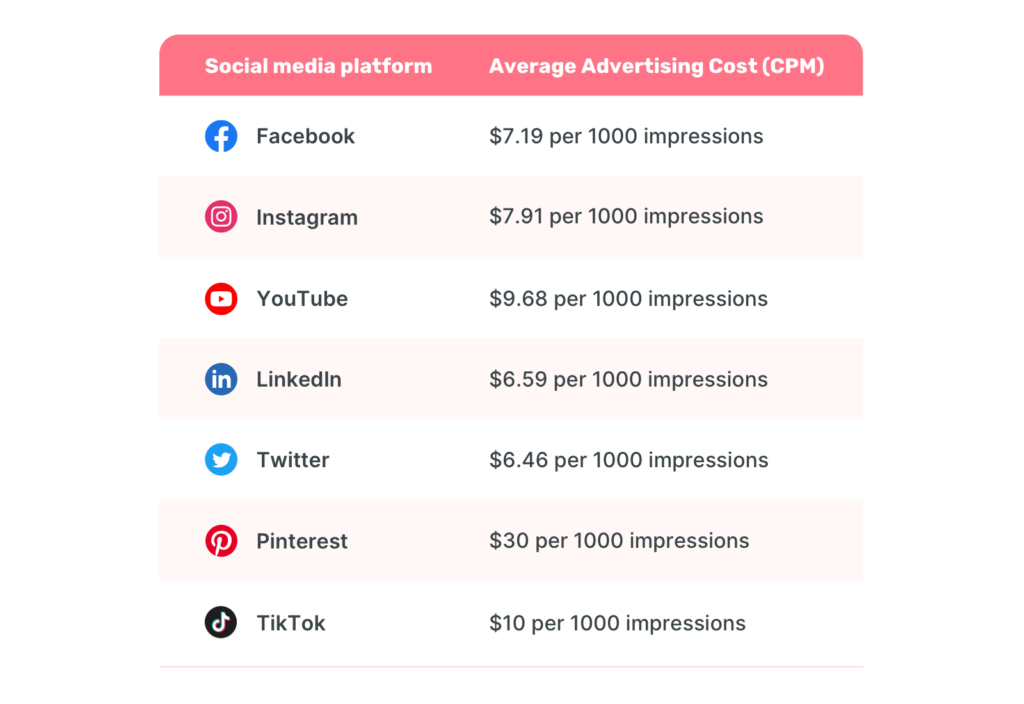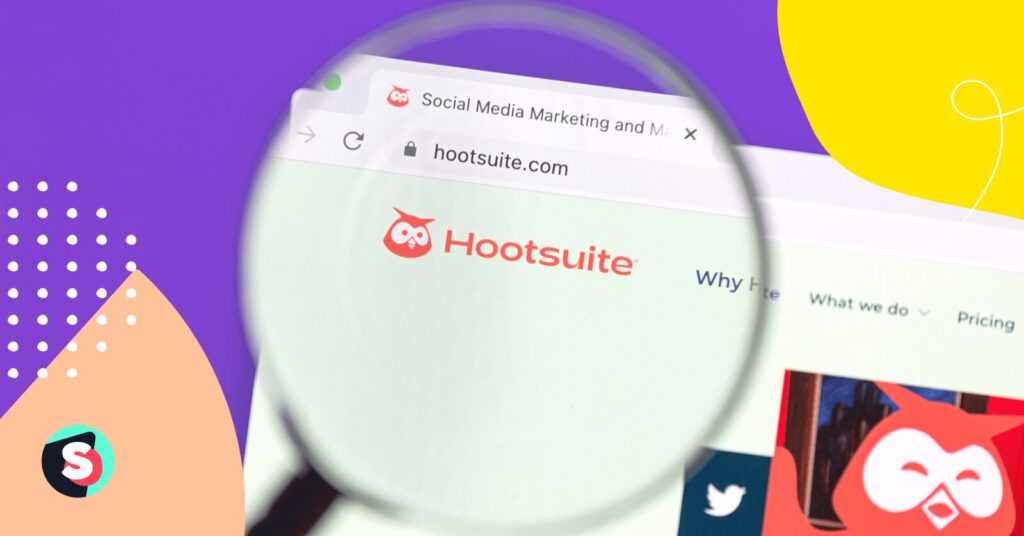When you run digital campaigns, you need to know their impact on your target audience. It is equally important to know how to make use of your budget so that your campaign is seen by the people you want. This is where CPM or cost per mille can prove very useful. As online advertising continues to grow, it is time you should know about CPM, how it is calculated, and what you can do to get the best CPM. So, let’s get started.
CPM meaning: What does CPM stand for?
CPM is one of the most commonly used models for pricing advertisements in digital marketing and relies on impressions or ad views. The CPM pricing structure is particularly important for companies that have affiliate networks. Platforms such as Facebook and Google Display Network (GDN) offer options for CPM bidding.
CPM definition
CPM stands for cost per mille or cost per thousand. It is a paid advertising model which denotes the price of 1,000 impressions of your advertisement on a webpage. In Latin, mille stands for thousand. Impressions here means when a person sees or engages with your advertisement on marketing platforms, search engines, or social media. Simply put, impressions indicate how often your advertisement is shown on a web page.
For instance, if the CPM is $2.5, it means that a marketer or an advertiser must pay $2.5 for every 1,000 impressions of the digital ad.
CPM vs. PPC vs. CPA
CPM is not the only pricing model. Other methods for pricing online ads include cost-per-action (CPA) and pay-per-click (PPC). Depending on your need, you can determine which model works best for you.
- PPC (Pay-per-click): In this model, the advertisers pay for every click-through of the ad. You may have also heard about CPC (cost-per-click), which is actually the charge or cost for each click that needs to be paid by the marketer.
- CPA (Cost per action): In this pricing model, advertisers pay when a specific action takes place on the advertisement. Hence, it is useful if you have specific marketing goals. In fact, cost-per-acquisition (CPA) also falls under this category and involves payment for every conversion. Some other examples of actions include when a person registers for a webinar or event, signs up for a newsletter or a trial, buys a membership, completes a questionnaire, buys a product, or shares something on social media channels.
What is the CPM formula?
Here is the simple formula for calculating the CPM.

So, if you spend $40 for 10,000 impressions, then your CPM is $4.
Advertisers select the publisher or website owners depending on where they want to publish the ad and whom they want to target. Advertisers, then pay the ad publishers the CPM for every 1000 impressions, which usually starts from $1.
What is a good CPM
Similar to other pricing models and metrics, it is difficult to define a good CPM based on just a factor or value. You need to consider your previous campaigns, benchmark the value against the market average, and assess the impact of CPM on the ROI to determine if your CPM advertising efforts are ticking the right boxes.
Usually, CPM is about quality, not quantity. Here’s why. Even if you have a lower CPM, if the impressions are not converting, then it doesn’t bring in much value than a campaign with a higher CPM. If a business pays a very small amount to get the results they want and another business gets the desired results but with a premium price, then the two businesses have found a good CPM that works for them!
This means a good CPM helps you reach your marketing objectives.
In fact, the CPM depends on many factors, such as
- Geography
- Advertising network or platform
- Target audience size
- Campaign objective—awareness, conversion, etc.
- Ad format and creative aspects
- Seasonality—time of holidays, sporting events, etc.
- Supply and demand—the demand for your target audience for the time your campaign is running as well as the availability and responsiveness of your target audience
CPM on different social media platforms
According to a report, the CPM for advertising on social media in the third quarter of 2022 was $8.15. Usually, the social media CPM increases to more than $6 in the final quarter of every year. This rise is primarily due to the high demand for advertising during that time to attract potential customers.

Bonus articles:
What are the benefits of using CPM?
Here’s why the CPM pricing model is a popular choice among digital marketers.
Cost-effective
Although costs may vary, CPM is considered one of the least expensive pricing models in the world of digital advertising. Additionally, you pay only for a fixed number of impressions and if you are not happy with the results, you can make changes to your ad and launch a campaign again without overly spending your budget.
Increased brand recognition
Typically, a CPM campaign improves your reach, brand visibility, and awareness. Firstly, your ad appears in front of a wide range of audiences. This means you are leaving an impression on your audience with your brand. In the long term, as you will expand your marketing efforts and become more specific with objectives, you will know what works for your business.
High-quality leads
When used right, CPM can also prove effective in generating leads for your business. The platforms which offer CPM also offer ways to engage leads. This will come in handy when you go for a narrower marketing campaign. You can have a repository of potential leads to more accurately identify your target leads and subsequently increase conversions.
Plus, the metrics and insights you get from the CPM campaigns can be effectively utilized in your next campaigns.
Limitations of CPM
CPM advertising does have some limitations.
Web traffic quality
Since you may not precisely know where the advertising network will place your ad, it is difficult to predict the quality of web traffic. For instance, the platform may deliver your ad to an audience who may not have any interest.
Impressions, not action
Impression, as discussed earlier, means your ad is viewed by the target audience and may not result in clicks or conversions. Although it may increase reach or visibility, it may not lead to actions.
Fraudulent activities
In some cases, fraudulent activities can occur when the number of impressions is inflated to make marketers overpay for CPM ads. In such cases, marketers can be paying for impressions from the bots. So, choose a reliable advertising platform.
Is CPM right for your business?
CPM can be a good starting point for many businesses because of the benefits discussed above. This pricing model works effectively for
- Small businesses
- Start-ups
- Businesses trying to figure out their marketing strategy or marketing budget
- Large businesses that are running border marketing campaigns with a small budget
Additionally, you also need to consider what this model can do for you and the ROI you will get from the campaign.
The bottom line is you can explore CPM ads to learn if they are the right fit for your business. With that being said, it can prove to be an effective tool for small businesses, and CPM offers many benefits compared to other pricing models.
How to get the best CPM
CPM is a valuable metric for digital marketers. So, utilize the following tricks and tips to get the best CPM and maximize ROI.
1. Choose an ad network
There are a number of networks and publishers available for CPM advertising.
- Google Display Network (GDN)
- YouTube
- TikTok
These networks cover a variety of ads, including contextual ads, display ads, native ads, mobile ads, in-feed ads, video ads, dynamic ads, and much more. For instance, when it comes to bidding on display ads, GDN works the best. However, if you want to use social media channels for advertising, then you may need to check CPM ad guidelines for that particular platform.
2. Choose the right audience
When your audience segmentation and targeting are right on spot, then you can spend your budget judiciously only on the leads that matter.
3. Use for broader campaigns
Since CPM ads primarily help you increase brand recognition and awareness, they are effective in broad marketing campaigns. You can use the insights from these ads to further create specific follow-up ads for a specific target audience.
4. Take into account seasonal variations
Understanding seasonal variations can help you benchmark your performance and forecast revenue. Think from your customer’s perspective. Analyze your previous data to determine when you are getting highs and dips. For instance, look out for occasions, special days, or festivals when you may see an increase in spending.
Understanding these trends and bringing them into your ad management will help you avoid unforeseen changes and optimize your budget flow.
5. Keep a check on the frequency
As a general rule of thumb, make sure your ad isn’t shown to the same people more than three times.
6. Highlight what makes you different
Although CPM ads are for broad campaigns, do not miss out on highlighting what makes you different. For instance, if you are running a CPM ad on orthopedic mattresses, then make sure to highlight the features or USPs.
7. Focus on your copy and visuals
If you want to leave a lasting impression on your audience, your ad copy and visuals should be attention-grabbing. So focus on using the right and powerful keywords.
8. Explore ad format and placement
Ad formats and placement are critical for CPM ads. You need to start by determining the buyer persona and understanding your competition. These insights will let you know what works best for your target audience and what your competitors are doing right that you can replicate.
It will also help you decide not only the ad publisher to reach your target audience but also the formats (mobile ads, native ads, display ads, etc.)
9. Analyze what’s working and what’s not
Track and revisit your results to analyze the performance of your CPM ads. Report and share the CPM calculations and insights regularly with your team to optimize performance.
Final Words
CPM is a valuable pricing model for marketers and advertisers that gives you accurate information on the impression of your ad campaign. Insights from your CPM campaign can help you finetune your future campaigns with a specific marketing objective. Use the tips discussed above to create successful CPM campaigns.



